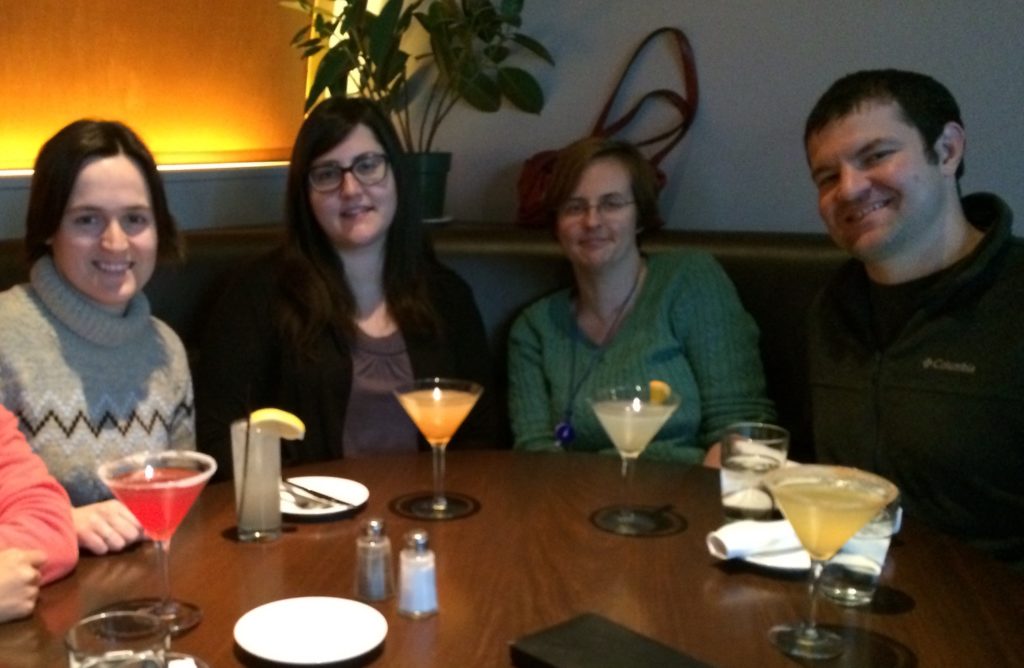Thousands of different types of bacteria can be found inside our mouths. Scientists at Forsyth believe these microbes are more than just idle passengers—they’re active partners in our health. Investigating bacteria in the oral cavity is now a major frontier of biomedical research, leading us to a deeper understanding of tooth decay, overall health, and risks for certain infections.
Dr. Carla Cugini is an Assistant Professor in the Department of Oral Biology at Rutgers School of Dental Medicine. Before launching her academic career, Dr. Cugini was a postdoctoral researcher in Forsyth’s Microbiology department. Here, she shares how Forsyth played a role in her research interests and overall growth as a scientist.
Q1: Tell us a little bit about yourself.
I grew up in Watertown, Massachusetts, and went up to the University of New Hampshire for undergrad. That’s where I started getting involved in research. I was working in the virology lab, and that’s where I started having an affinity for microbiology. When I graduated in 2000, I went back down to Watertown and found a job as a technician at Tufts New England Medical Center.
I was working on Lyme disease research, and after a couple of years, I realized that if I wanted to go past being a tech, I needed to go to grad school. I interviewed at a lot of different places, but I ended up going to Dartmouth for their graduate program in Molecular and Cellular Biology. I worked with a woman named Dr. Debora Hogan. Her lab looks at bacterial-fungal interactions, and I focused on Candida albicans and Pseudomonas interactions, which are implicated in a range of infections and systemic diseases. That’s where I started getting involved in the microbiology of multispecies interactions.
Q2: How did you end up at Forsyth?
I was realizing that I needed to find a post doc. Dr. Mary Ellen Davey was a researcher at Forsyth, and I saw her give a talk up at Dartmouth. I thought, “I really like this.” It sort of followed with the rest of the multispecies interactions work I was doing. I sent her a message asking if she had any open positions for a post doc, and she did.
Q3: What kind of work did you do as a post doc at Forsyth?
I was there from 2010 – 2014 and worked on a couple of different projects. In one project, I was looking at Porphyromonas gingivalis and the molecular biology of bacteria involved periodontal disease. I also investigated how an enzyme called arginine deiminase from the bacterium strep intermedius impacts Porphyromonas gingivalis, and how that impacts biofilm formation. Everything was sort of geared around biofilm formation because of the nature of the oral cavity and the nature of these bacteria.
One of the other projects was looking at capsule formation. Some bacterial strains have a capsule surrounding them, and the capsule helps to evade the immune system and keep the bacteria around. We investigated how the capsule is regulated. I also I started some of my own side projects. One was looking at Porphyromonas and Fusobacterium interactions, which I’m still researching today.
The microbiology of the oral cavity is fascinating. It’s this anaerobic environment that is very hostile for these bugs, and they’re just so good at being where they are. And I just like growing bugs—it’s fun to play around with them and learn more about their biology.
Q4: What was the culture and research environment like at Forsyth?
Forsyth was great. It was such a fun time, and the scientists were wonderful. One of the best things we started was a group of people—microbiologists and immunologists—that were really interested in talking about science and potential collaborations. That was one of the most enriching things I did when I was there, to have these discussions with people who approached the oral cavity a little differently than I did and had a different background than I had.
Forsyth is great because you’ve got this nice mix of basic scientists and clinicians who all have different interests and come at a problem from different angles, so you come up with some really cool projects. That’s what makes Forsyth super special. At other places I’ve worked, we didn’t have everyone thrown into one institute. The clinicians weren’t necessarily in with the basic researchers, so there was always a bit of a disconnect. It was nice to have us all thrown in together.

Q5: How did your time at Forsyth prepare you for the next step in your career?
While I was at Forsyth, I had the opportunity to write an NIH RF1 research grant award. My advisor, Mary Ellen, made sure I had the right training to get me to the next step. I also received a funded F32 NIH fellowship award. That was one of the best things Mary Ellen helped me with. That sets up your NIH history and really helps to launch you into the next step. I also had the opportunity to attend conferences and give talks. When we’re given the opportunity to give a talk outside the institute, we’re taking a step out into a potentially hostile environment. You need that experience and exposure in science.
Learn more and apply to join the Forsyth Alumni Association.
